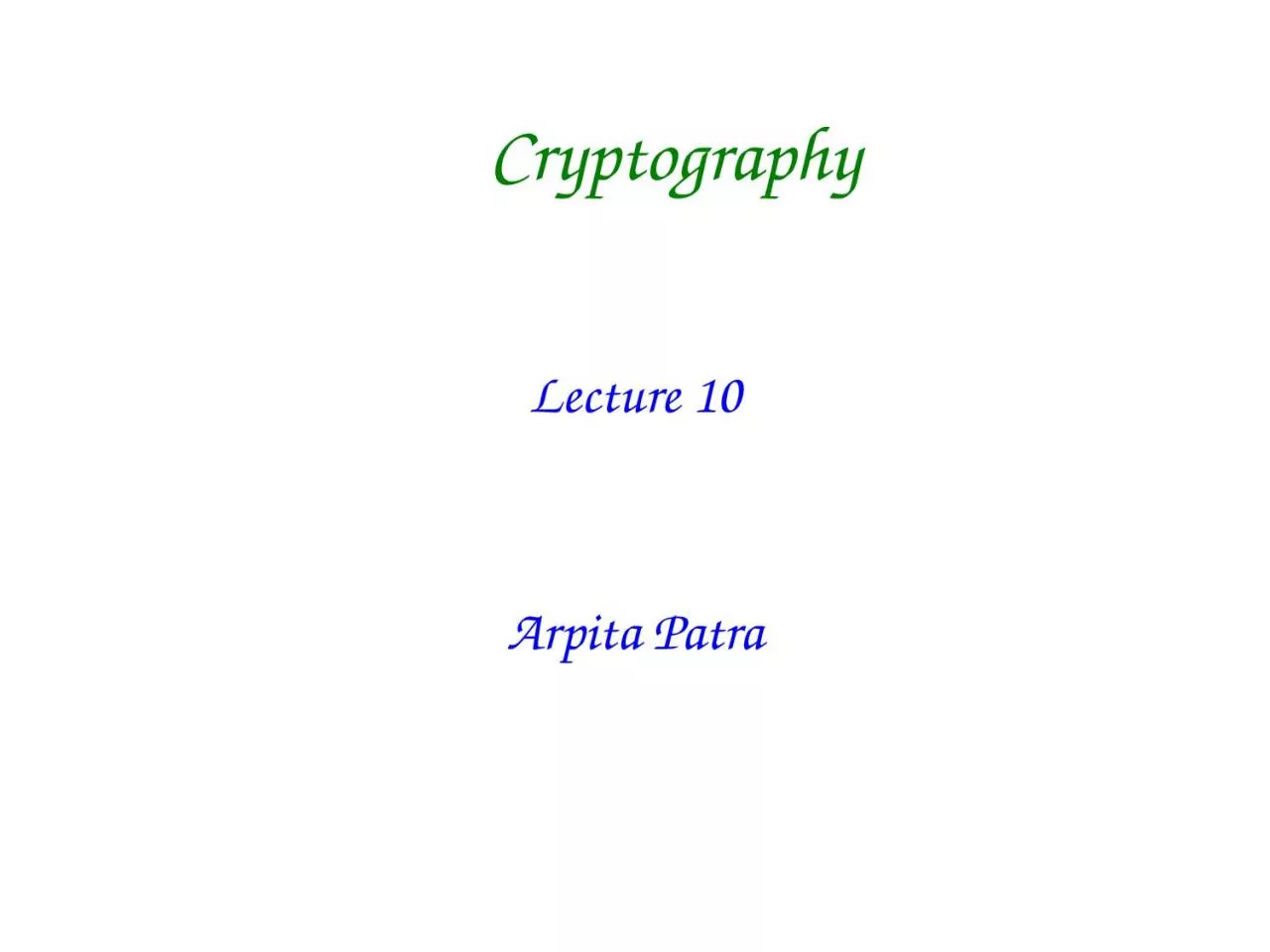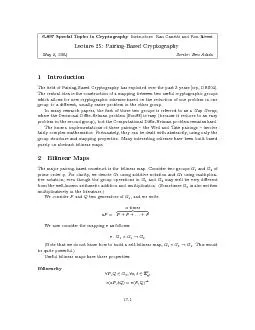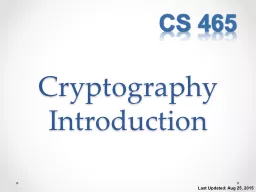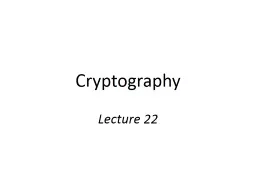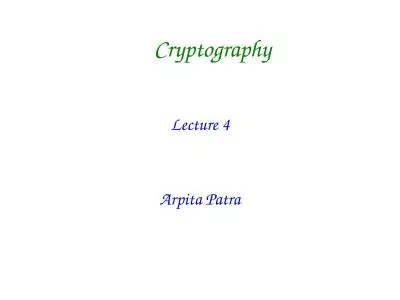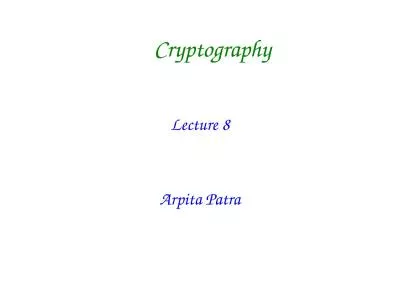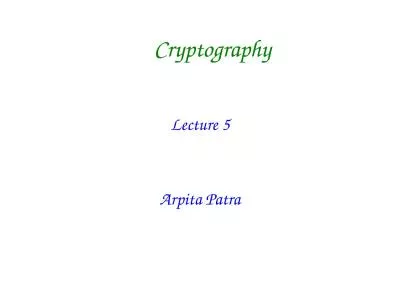PPT-Cryptography Lecture 10 Arpita
Author : abigail | Published Date : 2022-06-20
Patra Quick Recall and Todays Roadmap gtgt CPA amp CPA mult security gtgt Equivalence of CPA and CPA mult security gtgt El Gamal Encryption Scheme gtgt Hybrid
Presentation Embed Code
Download Presentation
Download Presentation The PPT/PDF document "Cryptography Lecture 10 Arpita" is the property of its rightful owner. Permission is granted to download and print the materials on this website for personal, non-commercial use only, and to display it on your personal computer provided you do not modify the materials and that you retain all copyright notices contained in the materials. By downloading content from our website, you accept the terms of this agreement.
Cryptography Lecture 10 Arpita: Transcript
Download Rules Of Document
"Cryptography Lecture 10 Arpita"The content belongs to its owner. You may download and print it for personal use, without modification, and keep all copyright notices. By downloading, you agree to these terms.
Related Documents

